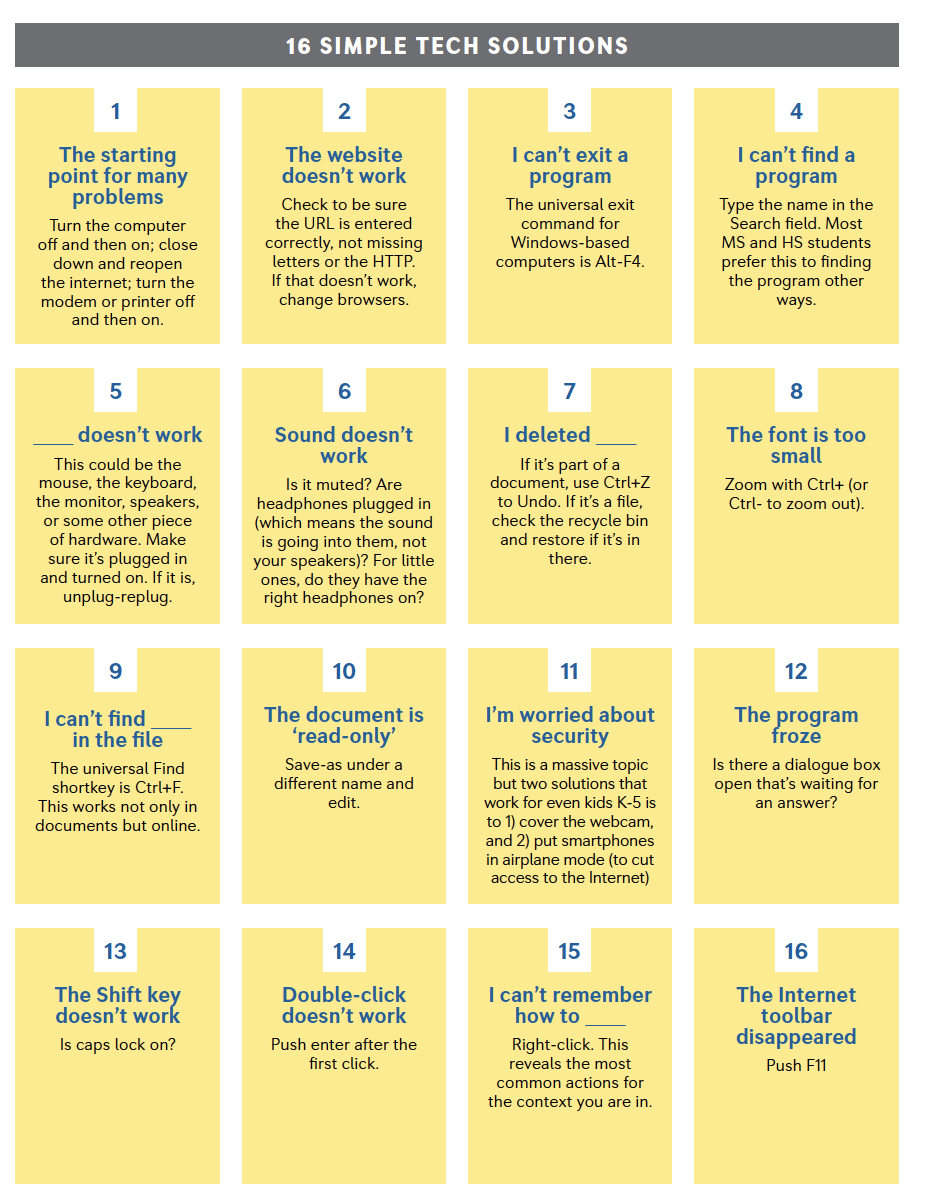Learning to code is akin to receiving the key to a world of opportunities. It’s not about zeros and ones, or math and science. It’s about solving problems kids didn’t think they could, in creative ways that feel good. It gives students the power to shape a world they’re becoming part of, for many the key to a brighter future than their current one.
The Ask a Tech Teacher crew has come up with a foundational list of tips for teaching coding. Read them. Share in comments what your secret techniques are:
6 Tips for Teaching Kids Coding
If you were around when the internet first came out, you may have seen how coding was a career for specialized professionals. These professionals needed to get a specialized degree, and they gained experience through building software. But today, coding has become more accessible, and everything online was made through coding, and today’s employers are looking for employees who can code. If you are preparing to teach kids how to code, there are a few things you should know.
Educate Yourself on Coding
Even if you understand coding, teaching it requires a deeper understanding, and it never hurts to brush up on your skills. Taking a class can help you broaden your knowledge, and it can also help you see other teaching styles. There are plenty of courses and classes out there, and many community colleges offer programs as well. If you are thinking about broadening your college education, you could even tap into the value of your home to finance this venture. Getting a home equity line of credit is not that expensive compared to student loans, and it can help you pay for your education. While this might not be the right option for everyone, you can look at a guide with more information on what you should know.
Help Kids Get Interested
Kids might think coding is cool, but they will get really interested as they learn that all the programs, websites, and games they love are made possible with code. They might love the idea of making their own. Being able to explain how languages work can help you relate them to things the kids enjoy. If some students are into robotics or virtual reality, they might be interested in learning Python. Even if your students only enjoy sports or other non-tech activities, you can still relate these things to coding so they get excited and are motivated to continue. There are many different learning styles out there, and the way kids in your class prefer to learn can vary. Getting to know each child’s learning style will help you better understand what motivates them.
Go Slowly
One of the hardest parts of programming is the frustration that arises when things don’t work out or the programmer must go back several times to get it right. Troubleshooting failure is one of the biggest things coders focus on, but kids might find this leads to frustration. They might find the material too challenging, especially for younger learners. Giving your students the freedom to experiment at their own pace can erase much of the frustration associated with this skill. That does not mean your student should have to teach themselves. Even though an adult might be able to learn the skill on their own, it can be helpful for kids to have a good teacher and a more structured environment. This will also help them stay interested in a long time to come.
Don’t Keep to Only One Language
Software developers learn many languages throughout their careers, and even if your students start with a simpler language, they should still have a broad understanding of general computer languages. Many share similar terms and concepts, and it’s a good idea for your students to understand these common concepts. While many kids start out with learning visual languages, these are simply designed to teach the general ideas, and they are then left behind as the student advances.
Go into it With the Right Mindset
It is easy to have a fixed mindset instead of a growth mindset. Having a fixed mindset means you assume kids have a certain amount of natural talent in only some areas. But this can lead to the idea that there are smart and dumb people in the world. However, if you want to bring joy to education when you are teaching kids something like coding, you should recognize the fact that gaining skills like problem solving comes through perseverance. Having perseverance and a growth mindset can help anyone learn nearly anything they set their minds to, allowing them to do well in areas they may have never thought about before. It is often challenging to have kids take on new concepts, but it is important so you can help them grow.
Encourage Time Spent in Games
It’s easy to discourage kids from playing too many games because many parents see it as a drain on time. However, the right types of games can help your students develop problem-solving skills and the ability to explore. Of course, if gaming gets in the way of other homework, priorities should be reevaluated. However, within the right boundaries, encouraging gaming can open the door to encouraging them to dig deeper and learn about the coding that makes up the game. This could help your student get into a high-paying profession.
Here’s the sign-up link if the image above doesn’t work:
Jacqui Murray has been teaching K-18 technology for 30 years. She is the editor/author of over a hundred tech ed resources including a K-12 technology curriculum, K-8 keyboard curriculum, K-8 Digital Citizenship curriculum. She is an adjunct professor in tech ed, Master Teacher, webmaster for four blogs, an Amazon Vine Voice, CSTA presentation reviewer, freelance journalist on tech ed topics, contributor to NEA Today, and author of the tech thrillers, To Hunt a Sub and Twenty-four Days. You can find her resources at Structured Learning.






































That’s a great article. Back when I was young we coded using only zeros and ones and sometimes we didn’t even have ones. That was a joke, but Assembly and Fortran, really old stuff was common. Anyawy, programmers of all types are in great demand. It is an important skill to learn.